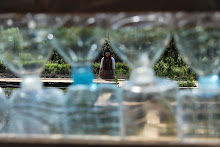
Sarah Foqué (Leeds, UK), Eric Henzler (Stuttgart) , Erich Marty (Winterthur, CH) , Trine Pedersen (Kopenhagen, DK), Matthias Santiago Stähle (Hamburg) , Arne Schneider (Stuttgart)
Vernissage: Freitag, 30.10. 2009 , um 20 Uhr
Einführung: Gerhard Friebe
Ausstellungsdauer: 31.10.09 bis 22.11.09
Öffnungszeiten: Sa + So : 15- 19:00 und nach Vereinbarung (Tel.: 0711 / 6493968)
Ort: OP-Nord; Nordbahnhofstraße 45, 70191 Stuttgart , U-Bahn Linie 15, MilchhofDie Ausstellung Young Swampy Formalism bringt junge europäischer Künstler mit interschiedlichen Ansätzen in Malerei, Zeichnung und Videoarbeiten zusammen. Sie verbindet ein entscheidendes Merkmal: die Auseinandersetzung mit dem spannungsverhältnis zwischen Konzeptidee und Arbeitsprozess, verbunden mit einem klaren Hang zu subtilen Humor.
The exhibition brings together young European artists with different positions in painting, drawing and filming. They all got one key feature in common: they're all dealing with the two poles of conceptual ideas and working process, combined with a clear preference for an understatedsense of humour.















